Are you looking to improve your physical, mental, and emotional well-being? If so, incorporating strength training, yoga, and meditation into your fitness routine may be just what you need. In this article, we’ll delve into the many benefits of these practices and explore how you can incorporate them into your daily routine. From building muscle and improving flexibility to reducing stress and anxiety, strength training, yoga, and meditation offer a range of benefits that can help you feel your best. So read on to learn more about how these practices can enhance your overall well-being.
Table of Contents
The Holistic Triad
When it comes to living a healthy and balanced lifestyle, it’s important to consider the holistic triad of strength training, yoga, and meditation. These three practices work together to not only promote physical strength and health, but also mental well-being.
Let’s start with strength training. Engaging in regular physical exercise has numerous benefits for both the body and the brain. Not only does it help to build and maintain muscle mass, but it can also improve bone density, reduce the risk of injury, and enhance balance and coordination. But the benefits of strength training don’t stop there. Research has shown that regular exercise can improve brain function, including memory, problem-solving skills, and creativity. It can also reduce stress, improve sleep, and even boost mood.
But what about after a strength training session? This is where yoga and meditation come in. Engaging in yoga practice, with its focus on flexibility, mobility, and range of motion, can help to alleviate muscle soreness and promote blood flow to the limbs. And let’s not forget about the benefits of meditation. This practice can help to relax the mind and body after a physically demanding workout and has been shown to reduce stress, improve sleep, and enhance overall mental well-being.
But the benefits of the holistic triad don’t stop there. When practiced together, strength training, yoga, and meditation can work together to create a strong and healthy body, as well as a calm and focused mind. So why not give them a try and see the positive impact they can have on your overall health and well-being?
What Is Strength Training?
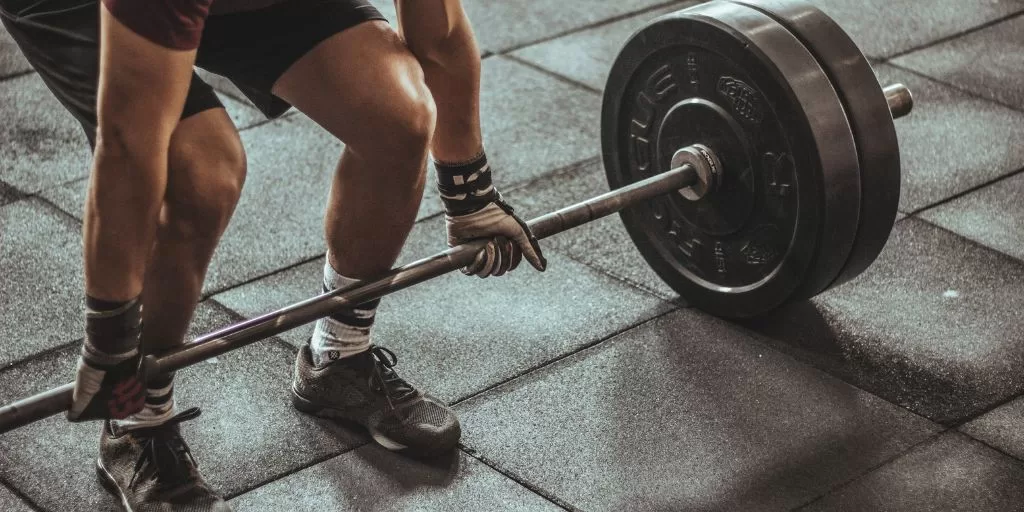
Strength training is a type of physical activity that involves using weights or your own body weight to perform exercises that build muscle mass and strength. It can include activities such as lifting weights, using resistance bands, or performing bodyweight exercises such as push-ups or squats. Strength training is often done with the goal of improving physical performance, increasing muscle mass, and improving overall health and fitness. It is typically performed two to three times per week, with each session lasting about 30-90 minutes.
Fitness pros often recommend incorporating strength training into your exercise routine because it helps to build and maintain muscle mass, which is important for maintaining a healthy metabolism and preventing age-related muscle loss. Strength training also helps to improve bone density, reduce the risk of injury, and increase overall strength and endurance.
One way to incorporate strength training into your routine is through a strength training workout. These workouts typically involve using weights or resistance bands to perform exercises that target specific muscle groups. Some examples of strength training exercises include bicep curls, tricep dips, and squats. These exercises are the most common exercises you can execute in the gym. However, since strength training usually requires some sort of resistance to train with, many come up with alternatives such as bodyweight workouts or even some forms of muscle-building yoga to save one the trouble of leaving home.
Strength Training Benefits
One of the primary benefits of strength training is the ability to build muscle mass and strength. By lifting weights or using your own body weight to perform exercises, you can increase the size and strength of your muscles. This can be especially beneficial for those looking to improve their performance in activities that require strength, such as sports or lifting heavy objects.
Improved Bone Density: Strength training can also help to improve bone density, which can reduce the risk of osteoporosis and fractures. By placing stress on the bones through weight-bearing exercises, you can increase bone density and improve overall bone health.
Reduced Risk of Injury: Strength training can also help to reduce the risk of injury. By building strong muscles, you can improve your body’s ability to support and protect your joints, reducing the risk of injury during physical activity.
Improved Balance and Coordination: Strength training can also help to improve balance and coordination. By strengthening the muscles that support your joints, you can improve your ability to maintain balance and control your movements.
Enhanced Posture: Strength training can also help to improve posture. By strengthening the muscles that support your spine and other joints, you can improve your ability to maintain good posture and reduce the risk of back pain and other musculoskeletal issues.
Overall, strength training offers a range of benefits that can improve physical health and performance. Whether you’re looking to build muscle mass and strength, improve bone density, reduce the risk of injury, or enhance posture
Strength Training Main Principles
When incorporating strength training into your routine, it’s important to adhere to the main principles of strength training. These include:
Progressive Overload: This principle states that you should gradually increase the intensity of your workouts as you become stronger and more comfortable with the exercises.
Periodization: This principle states that you should vary the intensity and focus of your workouts on a regular basis in order to see the best results.
Recovery: This principle states that you should allow adequate rest between workout sessions in order to give your body time to repair and recover.
Other Important Aspects of Strength Training
While it may seem straightforward, there are several important aspects to consider when it comes to strength training. Learn about them by reading the text below.
Hip-Hinge Movement: One important aspect of strength training is the hip-hinge movement, which involves hinging at the hips rather than the lower back. This movement is used in exercises such as deadlifts and kettlebell swings and is important for maintaining good form and reducing the risk of injury.
Postural Muscles: Another important aspect of strength training is the development of postural muscles. These are the muscles that support your spine and other joints, and are important for maintaining good posture and reducing the risk of musculoskeletal issues.
Muscle Power: Another aspect to consider in strength training is muscle power, which refers to the ability of a muscle to produce force quickly. Developing muscle power can be especially important for those who participate in activities that require explosive movements, such as sports or lifting heavy objects.
Coordination: Finally, coordination is another important aspect of strength training. By performing exercises that require coordination, such as dumbbell lunges or kettlebell Turkish get-ups, you can improve your ability to control your movements and maintain balance.
Overall, strength training is a valuable activity that can improve muscle mass and strength, bone density, and physical performance. By considering important aspects such as the hip-hinge movement, postural muscles, muscle power, and coordination, you can optimize your strength training routine and achieve your fitness goals.
What Is Meditation?
Meditation is a practice in which typically you focus your attention on your breath or an object of awareness in order to bring about a heightened state of consciousness. Regular meditation has been linked with a variety of mental health benefits including improved mood, decreased stress, and enhanced self-awareness. It can also help to regulate emotions, improve focus and concentration, and boost creativity.
Meditation can have a positive impact on mental and emotional well-being. It can involve focusing the mind on the present moment, without judgment (mindfulness meditation). Meditation has been shown to reduce stress and anxiety, improve sleep, and increase feelings of calm and relaxation. It can also help to improve focus and concentration.
Meditation Benefits
Meditation can have a wide range of benefits for both your physical and mental well-being, including reducing stress and anxiety, improving focus and concentration, calming the mind, and promoting relaxation.
Blood Pressure: Meditation has been shown to help lower blood pressure. By reducing stress and anxiety, meditation can help to relax the body’s blood vessels and decrease blood pressure.
Parasympathetic Nervous System: Meditation can also activate the parasympathetic nervous system, which is responsible for the “rest and digest” response in the body. By activating this system, meditation can help to reduce stress and promote relaxation.
Chronic Pain Conditions: Meditation has been shown to be effective in reducing chronic pain, such as back pain, arthritis, and fibromyalgia. By promoting relaxation and reducing stress, meditation can help to alleviate pain and improve quality of life.
Neck Pain: Meditation has also been shown to be effective in reducing neck pain. By promoting relaxation and reducing stress, meditation can help to alleviate muscle tension and improve neck mobility.
Joint Pain: Similar to neck pain, meditation can also help to reduce joint pain, such as in the knees or hips.
Chronic Neck Pain: For those suffering from chronic neck pain, meditation can be a helpful tool in managing pain and improving overall quality of life.
Yoga Nidra Meditation for Sleep: Yoga nidra is a type of meditation that involves lying down in a comfortable position and focusing on the breath and a mantra. It is said to be a state of deep relaxation that can help to improve sleep and reduce stress.
Hormonal Balance: Meditation has been shown to help regulate hormones, such as cortisol and adrenaline, which can help to improve overall well-being.
Improved Digestion: By activating the parasympathetic nervous system, meditation can also help to improve digestion.
Wellness and Health: Overall, the practice of meditation can help to improve physical and mental well-being, leading to a sense of overall wellness and improved health.
So, if you’re looking to improve your physical and mental well-being, consider incorporating meditation into your daily routine. With its many benefits, meditation can be a valuable tool in improving overall health and well-being.
Meditation Main Principles
The main principles of meditation involve focusing the mind on a single point, such as the breath, a mantra, or an object, in order to promote relaxation and reduce stress and anxiety. In addition, meditation can improve concentration and focus, provide numerous health benefits, such as lowering blood pressure and improving sleep, and promote mental and emotional well-being. It can also act as a form of mental conditioning and improve mental skills like memory and problem-solving, as well as potentially improve brain function and increase brain size. Overall, the practice of meditation is geared toward calming the mind and improving overall health and well-being.
Is Meditation Connected to Yoga?
Meditation is often connected to yoga because it is seen as a key aspect of the practice. In fact, the word “yoga” itself means “union” or “to yoke,” and is often interpreted as the union of the individual self with the divine or universal consciousness. Meditation is one way to achieve this union, as it allows the practitioner to quiet the mind and access a deeper state of consciousness.
In a typical yoga practice, meditation may be incorporated into the session through the use of breathing techniques, mantras, or visualization exercises. These techniques can help to calm the mind and promote relaxation, which can in turn facilitate the experience of union or oneness.
Additionally, many people find that the physical practice of yoga, which involves holding poses and focusing on the breath, can also be meditative in nature. The concentration and focus required for the practice can help to still the mind and bring about a sense of calm and clarity.
Overall, meditation and yoga are closely connected because they both involve practices that can lead to a sense of inner peace and self-awareness.
Why People Meditate?
Some of the main goals of meditation include the numerous health benefits it can provide, such as lowering blood pressure, reducing chronic pain, improving sleep, and even boosting the immune system. Meditation can also promote mental and emotional well-being by reducing stress and anxiety and improving overall feelings of wellness and contentment.
Another reason why people practice meditation is the ability to improve concentration and focus. By training the mind to focus on a single point, meditation can help to improve attention span and mental clarity. In addition to improving focus, meditation can also be seen as a form of mental conditioning. By regularly practicing meditation, you can train your mind to be more resilient to stress and better able to handle difficult situations.
Along with mental conditioning, meditation can also help to improve a range of mental skills, such as memory, problem-solving, and creativity. Finally, meditation can be seen as a form of brain training, as it helps to improve brain function and potentially even increase brain size. Overall, the practice of meditation can provide numerous benefits for physical and mental health and well-being.
To sum up, people meditate for a variety of reasons. Meditation can be considered a form of brain or mind training (mental training) that supports strength training. By combining the two together, one can balance their yin and yang or mind and body.
What Is Yoga?
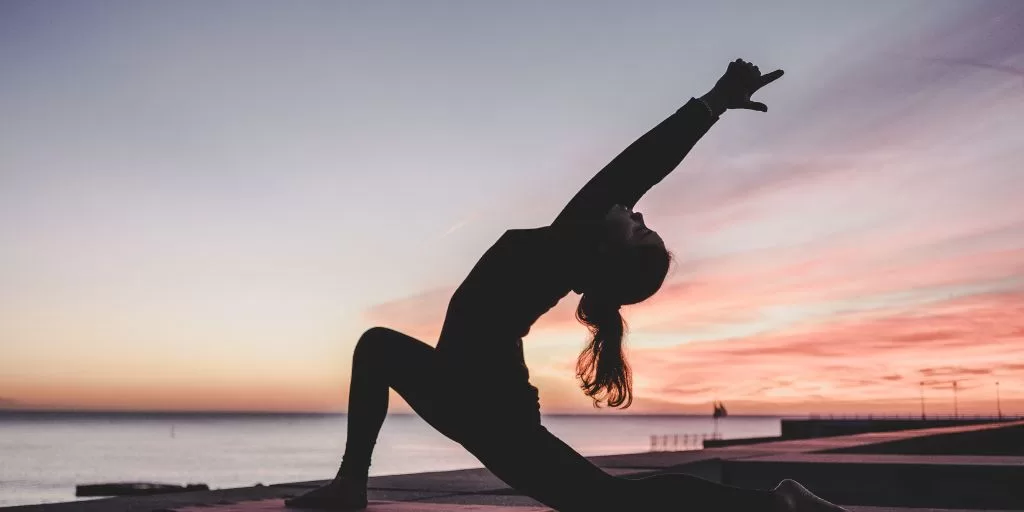
Yoga is a physical, mental, and spiritual discipline that originated in ancient India. It involves the practice of postures and movements, called asanas, and the control of the breath. Yoga is often associated with meditation and the cultivation of mindfulness, and it can be practiced by people of all ages and levels of physical fitness.
There is often confusion about the relationship between yoga and weight training or strength training. It is important to note that while yoga can provide some benefits for strength and muscle tone, it is not the same as weight training or strength training. Yoga focuses on mobility, flexibility, and range of motion, rather than on building muscle mass or strength. However, that being said, many people do find that their strength and muscle tone improve with regular yoga practice.
One of the key principles of yoga is the idea of “yoga is meditation.” This means that the practice of yoga is not just about the physical postures, but also about finding inner peace and stillness. In fact, many yoga classes include a period of meditation at the beginning or end of the class.
While yoga is often associated with physical benefits, such as increased blood flow and rejuvenation, it also has numerous mental and spiritual benefits. These can include improved focus and concentration, reduced stress and anxiety, and increased feelings of well-being and inner peace.
Overall, yoga is a multifaceted practice that can improve physical and mental health, as well as cultivate spiritual growth. Whether you are new to yoga or have been practicing for years, there is always something new to learn and discover on the mat.
Yoga Benefits
One of the benefits of yoga is that it can help to improve flexibility and range of motion. By holding stretches for an extended period of time, you can increase your flexibility and reduce the risk of injury. This can be especially beneficial for those who participate in activities that require a lot of movement, such as running or weight lifting.
In addition to improving flexibility, yoga can also help to build strength. While it may not be as intense as traditional weight training, certain yoga poses require you to use your own body weight to build muscle. This can be especially helpful for those who want to build strength but don’t have access to weights or a gym.
Combining yoga and weight training can be a great way to get the best of both worlds. Weight training can help to build muscle, while yoga can help to improve flexibility and overall strength. This combination can be especially helpful for those who are looking to improve their performance in a specific sport or activity.
Another benefit of yoga is that it can help to improve mental and emotional well-being. The practice of yoga involves focusing on the present moment, which can help to reduce stress and anxiety. It can also improve sleep and increase feelings of calm and relaxation.
One type of yoga that specifically focuses on relaxation and meditation is yoga Nidra. This practice involves lying down in a comfortable position and focusing on the breath and a mantra. It is said to be a state of deep relaxation that can help to reduce stress and improve sleep.
In addition to yoga Nidra, the practice of “Ommmm” meditation is another way to incorporate meditation into your yoga practice. This involves repeating the sound “Ommmm” during meditation to help focus the mind.
Overall, yoga offers a range of physical, mental, and emotional benefits. Whether you’re interested in improving flexibility, building strength, or reducing stress and anxiety, there is a type of yoga that can help you achieve your goals. So why not give it a try and see how it can enhance your overall well-being?
Yoga Main Principles
There are eight main principles of yoga, known as the “Eight Limbs of Yoga,” which were laid out by the ancient sage Patanjali in the Yoga Sutras. These principles provide a framework for living a meaningful and purposeful life. The eight limbs are:
Yama – This limb refers to the ethical standards and moral disciplines that one should observe, such as non-violence, truthfulness, and non-stealing.
Niyama – This limb refers to personal practices and observances that promote spiritual growth, such as cleanliness, contentment, and self-discipline.
Asana – This limb refers to the physical practice of yoga, including the various postures and poses that make up a yoga class.
Pranayama – This limb refers to the practice of breath control and the cultivation of life force energy, or prana.
Pratyahara – This limb refers to the practice of withdrawing the senses from external distractions and turning inward.
Dharana – This limb refers to the practice of concentration and focusing the mind on a single point.
Dhyana – This limb refers to the practice of meditation and sustained concentration.
Samadhi – This limb refers to the state of enlightenment or spiritual liberation that is the ultimate goal of yoga.
By following these eight principles, one can work toward cultivating physical and mental balance, self-awareness, and spiritual growth through the practice of yoga.
Is Yoga Strength Training?
Yes, yoga can be considered a form of strength training (similarly to Pilates). While it may not be as intense as traditional weight training, certain yoga poses require the use of your own body weight to build muscle. This can be especially helpful for those who want to build strength but don’t have access to weights or a gym.
In addition to building muscle, yoga also helps to improve flexibility and overall strength. By holding stretches for an extended period of time, you can increase your flexibility and reduce the risk of injury. This can be beneficial for those who participate in activities that require a lot of movement, such as running or weight lifting.
Another way that yoga can be considered a form of strength training is through the practice of “power yoga.” This type of yoga involves performing flowing sequences of poses that require strength and balance. Power yoga can help to build muscle, improve flexibility, and increase overall strength and endurance.
Overall, while yoga may not be as intense as traditional weight training, it can still be a valuable form of strength training that can help to improve flexibility, build muscle, and increase overall strength and endurance.
Can Yoga Build Strength?
For those of you who don’t think that yoga is a strong enough workout, research findings may surprise you. A 2012 study found that women who attended two 60-minute Ashtanga yoga sessions per week for eight months actually saw an increase in leg press strength compared to the women who didn’t engage in the activity. This type of intense yoga, also called by some “power yoga” (although others claim that while those forms of yoga are indeed similar, they are, in fact, different types of yoga), involves strengthening and toning several muscle groups at once. Furthermore, a recent study found that even six weeks of regular yoga was enough to significantly improve core and upper body strength in participants between the ages of 20 and 58. These results suggest improvements in muscle strength, endurance, balance, and flexibility in individuals regardless of age. Moreover, better muscle-building results were seen with Ashtanga yoga when contrasted to other forms. Thus, it would appear that yoga does have a place in a strength-building workout plan.
Can Yoga Replace Weight Training?
When it comes to building strength and improving physical fitness, weight training is often seen as the go-to activity. But what about yoga? Can this ancient practice provide the same benefits as traditional weight training?
One way that yoga can be considered a form of strength training is through the practice of “power yoga.” Power yoga is a type of yoga that incorporates elements of strength training into the practice. This form of yoga involves performing flowing sequences of poses that require strength and balance. Power yoga can help to build muscle, improve flexibility, and increase overall strength and endurance.
In addition to power yoga, certain traditional yoga poses can also help to build muscle. While they may not be as intense as traditional weight training exercises, certain poses, such as planks, push-ups, and Chair Pose or its derivatives, can help to engage and strengthen various muscle groups.
However, it’s important to note that yoga alone may not be enough to build significant muscle mass. Traditional weight training typically involves lifting heavier weights, which can be more effective for building muscle mass.
That being said, yoga can still be a valuable addition to a strength training routine. It can help to improve flexibility, balance, and overall strength and endurance, which can in turn help to improve performance in weight training exercises.
So, can yoga replace weight training? While it may not be a replacement for traditional weight training in terms of building significant muscle mass, it can still be a valuable complement to a strength training routine. By incorporating yoga into your fitness routine, you can reap the benefits of improved flexibility, balance, and overall strength and endurance.
10 Yoga Poses to Build Strength
The practice of yoga has been around for centuries and is known for its ability to improve flexibility, balance, and relaxation. But did you know that it can also be an effective form of strength training? In the text below, we’ll be exploring 10 yoga poses that can help you build strength and improve overall physical fitness. These poses, which include bodyweight yoga and bodyweight yoga poses, can be incorporated into a strength training journey or used to create a yoga strength training routine. Whether you’re new to yoga or a seasoned practitioner, these poses can help you build strength and improve your overall physical fitness. These poses will challenge and strengthen your muscles and provide the perfect complement to a strength training program. So if you’re ready to build strength and improve your physical fitness, read on to learn more about these 10 yoga poses.
Tiger Curl Pose
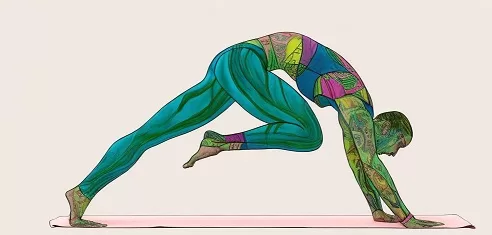
To do a Tiger Curl yoga pose (Phalakasana Variation Knee To Nose), follow these steps:
- Begin in a tabletop position on your hands and knees, with your wrists under your shoulders and your knees under your hips. Make sure your spine is in a neutral position.
- Inhale and lift your knees off the ground, so that you are balancing on your hands and feet.
- Exhale and curl your toes under, pressing through the balls of your feet to lift your hips toward the ceiling.
- Keep your shoulders down and your gaze forward as you lift your hips.
- Hold the pose for a few breaths, keeping your core engaged and your chest lifted.
- Curl up one of your knees to your chest and hold it there as long as you can.
- To release the pose, exhale and slowly lower your hips back down to the ground.
It’s important to keep your core engaged and your shoulders down as you lift your hips in this pose. You can also modify the pose by using blocks or a blanket under your hands for support. If you have any wrist or shoulder injuries, you may want to avoid this pose or use modifications to protect these areas. Listen to your body and let go of what isn’t comfortable. Follow your instincts and allow yourself to be creative. You’ll have a great time doing whatever feels right for you!
Chair Pose
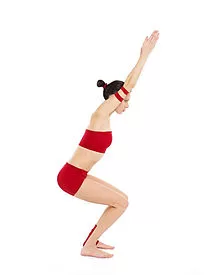
To do the yoga Chair Pose, or Utkatasana, follow these steps:
- Stand with your feet shoulder-width apart, facing forward. Engage your core and lift your arms up above your head, keeping your palms facing each other.
- Bend your knees and lower your hips as if you were sitting back into an imaginary chair. Keep your back straight and your chest lifted as you sink down.
- Hold this pose for 30 seconds to a minute, breathing deeply.
- To release the pose, straighten your legs and bring your arms back down to your sides.
Here are a few tips for this pose:
- Keep your feet firmly planted on the ground and distribute your weight evenly across both feet.
- Try not to let your knees extend too much past your toes as you sink down into the pose.
- Keep your chest lifted and your shoulders relaxed, rather than tensing up or hunching over.
Listen to your body and only go as deep into the pose as feels comfortable for you. It’s important to respect your own limits and modify the pose as needed.
Warrior III Pose
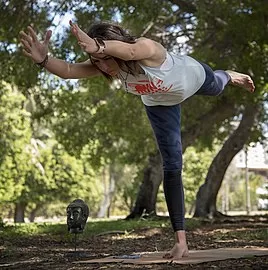
To do the Warrior III Pose (Virabhadrasana III), follow these steps:
- Begin standing with your feet hip-width apart and your hands on your hips.
- Shift your weight onto your right foot and lift your left foot off the ground, straightening it behind you.
- As you lift your left leg, lean forward from the hips, reaching your arms forward in front of you. Keep your arms and leg in one straight line.
- Engage your core and keep your left leg strong and straight as you extend your left leg behind you.
- Hold the pose for a few breaths, keeping your gaze forward and your balance steady.
- To release the pose, lower your left leg and come back to standing. Repeat on the other side.
Keep your core engaged and your arms and leg in one straight line as you do this pose. You can also modify the pose by using a wall or chair for support. If you have any lower back or ankle injuries, you may want to avoid this pose or use modifications to protect these areas. Sometimes the best way to figure out what feels comfortable for you is by listening to your body. You know better than anyone what’s comfortable and what isn’t, so let yourself go with the flow.
Boat Pose
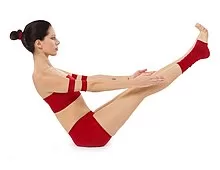
To do the Boat Pose (Navasana), follow these steps:
- Begin seated on the ground with your knees bent and your feet flat on the ground.
- Lean back slightly and lift your feet off the ground, bringing your shins parallel to the ground.
- Engage your core and lift your chest as you straighten your legs, bringing your body into a “V” shape.
- If it feels comfortable, you can extend your arms alongside your legs, parallel to the ground.
- Hold the pose for a few breaths, keeping your core engaged and your balance steady.
- To release the pose, slowly lower your legs and come back to seated.
Keep your core engaged and your balance steady as you do this pose. You can also modify the pose by keeping your knees bent or using a wall or chair for support. If you have any lower back or hip injuries, you may want to avoid this pose or use modifications to protect these areas. Whether you’re stretching, working out, or just living your life, it’s important to listen to your body and do what feels comfortable. You’ll be able to avoid injuries and feel more energized and alert overall.
Plank Pose

To do the Plank Pose (Phalakasana), follow these steps:
- Begin in a tabletop position on your hands and knees, with your wrists under your shoulders and your knees under your hips.
- Walk your hands forward, slightly past your shoulders, and tuck your toes under.
- Engage your core and lift your knees off the ground, straightening your legs as you come into a high plank position.
- Keep your shoulders over your wrists and your body in one straight line as you hold the pose.
- Hold the pose for a few breaths, keeping your core engaged and your balance steady.
- To release the pose, lower your knees back down to the ground.
Keep your core engaged and your body in one straight line as you do this pose. You can also modify the pose by using a wall or chair for support, or by doing a low plank on your forearms instead of your hands. If you have any wrist or shoulder injuries, you may want to avoid this pose or use modifications to protect these areas. Listen to your body and only do what feels comfortable for you.
Side Plank Pose
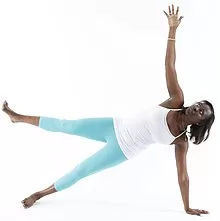
To do the Side Plank Pose (Vasisthasana), follow these steps:
- Begin in a plank position, with your wrists under your shoulders and your body in one straight line.
- Shift your weight onto your left hand and stack your right foot on top of your left.
- Lift your right hand up toward the ceiling, reaching your arm straight up.
- Keep your hips lifted and your body in one straight line as you hold the pose.
- Hold the pose for a few breaths, keeping your core engaged and your balance steady, then switch sides.
- To release the pose, lower your right hand back down to the ground and come back to plank.
It’s important to keep your core engaged and your body in one straight line as you do this pose. You can also modify the pose by using a wall or chair for support, or by doing the pose on your forearms instead of your hands. If you have any wrist or shoulder injuries, you may want to avoid this pose or use modifications to protect these areas. As always, it’s important to listen to your body and only do what feels comfortable for you.
Locust Pose
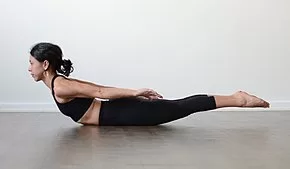
To do the Locust Pose (Salabhasana), follow these steps:
- Begin lying on your stomach with your arms at your sides and your legs extended behind you.
- Engage your core and lift your head, chest, arms, and legs off the ground as you reach your arms and legs away from each other.
- Hold the pose for a few breaths, keeping your core engaged and your balance steady.
- To release the pose, lower your arms and legs back down to the ground.
It’s important to keep your core engaged and your body in one straight line as you do this pose. You can also modify the pose by keeping your arms at your sides, using a strap around your feet to help lift your legs, or using a wall or chair for support. If you have any lower back or shoulder injuries, you may want to avoid this pose or use modifications to protect these areas. Remember to listen to your body and only do what feels comfortable for you.
Bridge Pose

To do the Bridge Pose (Setu Bandha Sarvangasana), follow these steps:
- Begin lying on your back with your knees bent and your feet flat on the ground, hip-width apart.
- Lift your hips up toward the ceiling, pressing down into your feet and hands.
- Grab your ankles with your hands under your body and lift your chest toward your chin, thus opening up your chest and stretching your pectoral muscles.
- Hold the pose for a few breaths, keeping your core engaged and your balance steady.
- To release the pose, lower your hips back down to the ground.
It’s important to keep your core engaged and your balance steady as you do this pose. You can also modify the pose by using a block or rolled-up blanket under your hips for support, or by keeping your hips on the ground and lifting your chest only. If you have any lower back or shoulder injuries, you may want to avoid this pose or use modifications to protect these areas. There is no one right way to do things, and what feels comfortable for you will vary depending on the situation. What works for one person may not work for another, so always listen to your body and do what feels best.
One-Legged Downward Facing Dog Pose
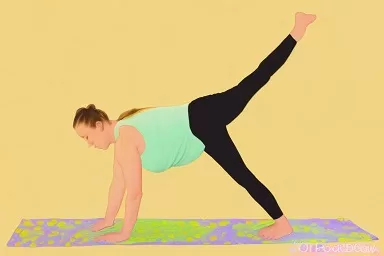
To do the One-Legged Downward Facing Dog Pose (Eka Pada Adho Mukha Svanasana), follow these steps:
- Begin in a tabletop position on your hands and knees, with your wrists under your shoulders and your knees under your hips.
- Lift your knees off the ground, coming into a downward-facing dog pose (Adho Mukha Svanasana).
- Shift your weight onto your left hand and lift your right leg up toward the ceiling, reaching your heel toward the sky.
- Keep your hips square and your core engaged as you hold the pose for a few breaths.
- To release the pose, lower your right leg back down to the ground and repeat on the other side.
It’s important to keep your core engaged and your balance steady as you do this pose. You can also modify the pose by using a wall or chair for support, or by keeping your knees on the ground and lifting your leg only. If you have any wrist or shoulder injuries, you may want to avoid this pose or use modifications to protect these areas. If you’re feeling a little uneasy about something you’ve been considering, it might be a good idea to wait and see how your body reacts before proceeding. Sometimes it takes some time for our intuition to kick in, so by listening to your gut you can avoid any potential discomfort or regret down the line.
Crow Pose
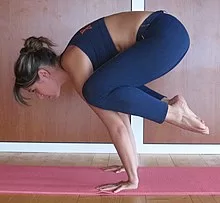
To do the Crow Pose (Bakasana), follow these steps:
- Begin in a tabletop position on your hands and knees, with your wrists under your shoulders and your knees under your hips.
- Shift your weight onto your hands and lift your feet off the ground, coming into a “floating” low squat.
- Place your knees on the outside of your upper arms, as close to your armpits as possible.
- Lean forward and lift your feet off the ground, balancing on your hands.
- Hold the pose for a few breaths, keeping your core engaged and your balance steady.
- To release the pose, lower your feet back down to the ground.
It’s important to keep your core engaged and your balance steady as you do this pose. You can also modify the pose by using a block or rolled-up blanket under your feet for support, or by coming into a modified crow pose with your knees on the ground. If you have any wrist or shoulder injuries, you may want to avoid this pose or use modifications to protect these areas. Every day is a new opportunity to experiment with your body and see what feels comfortable. Listen to your intuition and go with what feels good.
The Benefits of Yoga, Strength Training, and Meditation Combined Together
Incorporating strength training, yoga, and meditation into your fitness routine can offer a range of benefits for both your physical and mental health. Whether you’re a professional athlete or a complete beginner, these practices can be tailored to fit your needs and goals. So why not give them a try and see how they can enhance your overall well-being?
One way to combine the benefits of strength training, yoga, and meditation is through a yoga strength training routine.
A yoga strength training routine is a type of workout that combines yoga poses with traditional strength training exercises in order to improve physical strength and stability. This type of routine typically involves using yoga poses to increase mobility and stability, while incorporating strength training exercises to increase muscle strength. The goal of a yoga strength training routine is to provide a balanced workout that improves both physical and mental well-being.
In a yoga strength training routine, certain yoga poses are chosen for their ability to improve mobility and stability. For example, poses like Downward Facing Dog and Warrior II can help to strengthen the legs and core, while also improving flexibility and balance. These poses can be combined with traditional strength training exercises like squats, lunges, and push-ups in order to provide a well-rounded workout that improves overall physical fitness.
In addition to improving physical strength and stability, a yoga strength training routine can also incorporate elements of meditation to improve concentration and spiritual power. This might involve incorporating mindful breathing techniques or taking a few moments at the beginning or end of the workout to sit in quiet meditation.
Meditation has been used by kung fu practitioners, monks, and ancient samurai to improve physical and mental conditioning. When incorporated into a yoga strength training routine, meditation can help to improve focus, concentration, and mental clarity. This can be especially beneficial for athletes or fitness enthusiasts looking to improve their physical performance.
Meditation can also help to reduce stress and anxiety, which can be beneficial for overall mental and physical well-being. By taking a few moments to sit in quiet meditation, practitioners can calm the mind and find inner peace and stillness, which can help to reduce stress and improve overall health.
Furthermore, meditation has been shown to improve brain function and potentially increase brain size. This can lead to improved memory, problem-solving skills, and creativity, all of which can be beneficial for physical and mental conditioning.
In summary, adding meditation to a yoga strength training routine can help to improve focus, concentration, and mental clarity, as well as reduce stress and anxiety. This can lead to improved physical and mental conditioning, making it a valuable addition to any fitness routine.
Overall, a yoga strength training routine is a balanced workout that combines yoga poses, strength training exercises, and meditation in order to improve physical fitness, mental clarity, and spiritual well-being.
Conclusion: Improve Your Strength, Flexibility, and Peace of Mind

If you’re looking to improve your overall health and well-being, then incorporating strength training, yoga, and meditation into your fitness routine is a great place to start. Each of these practices offers a range of benefits that can help you physically, mentally, and emotionally. When combined together, you can reap the benefits of improved strength, flexibility, balance, and peace of mind.
In addition to the physical benefits of strength training and yoga, these practices can also have a positive impact on mental and emotional well-being. Yoga, in particular, has been shown to reduce stress and anxiety, improve sleep, and increase feelings of calm and relaxation.
Furthermore, if you would like to start with yoga and meditation, here is a beginner meditation guide that will help you learn the fundamentals.





